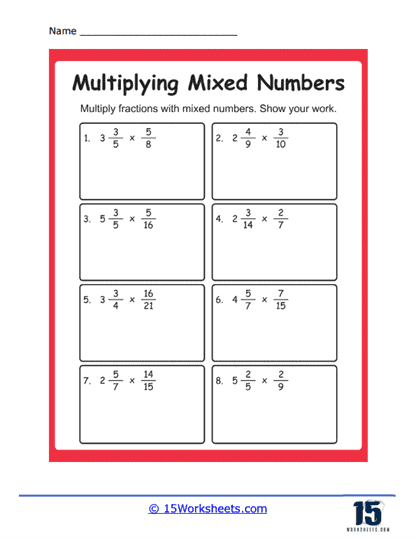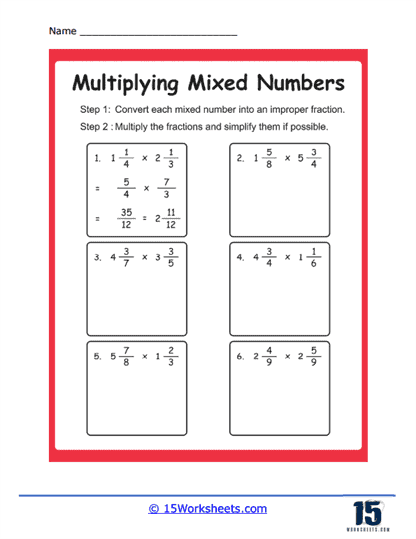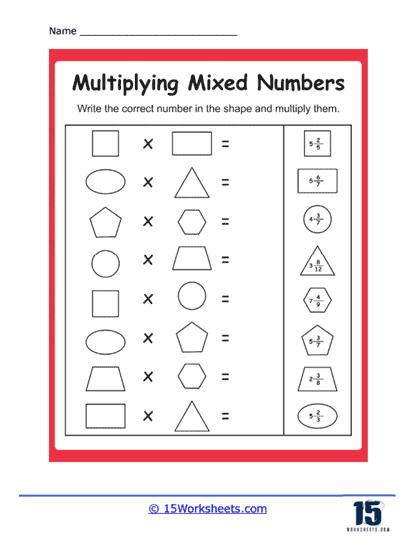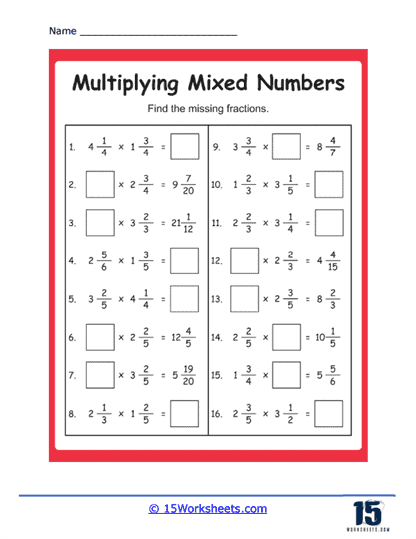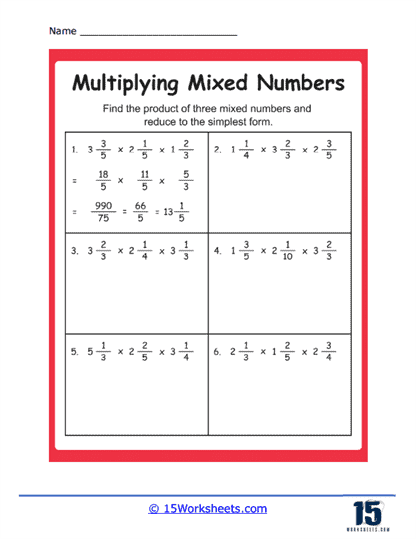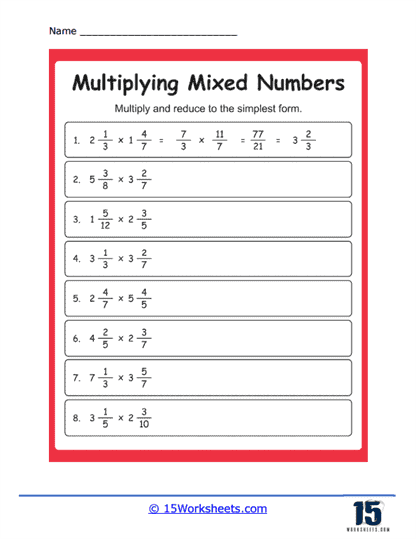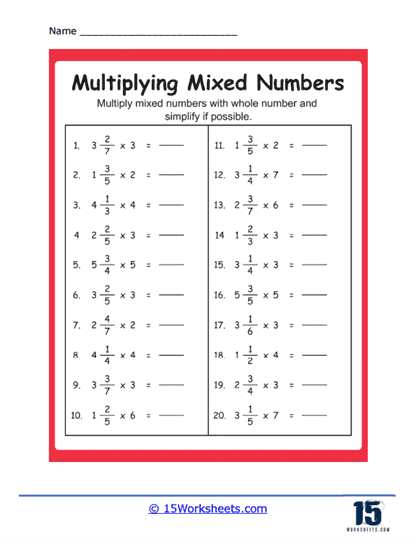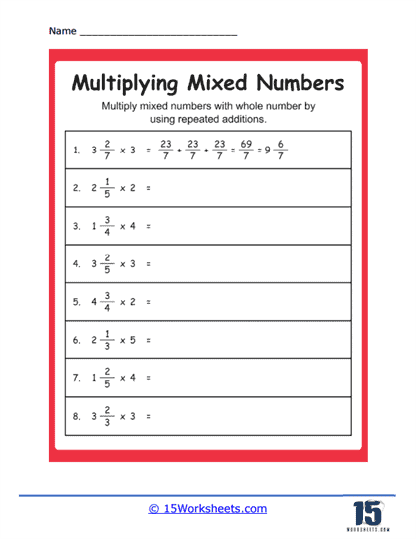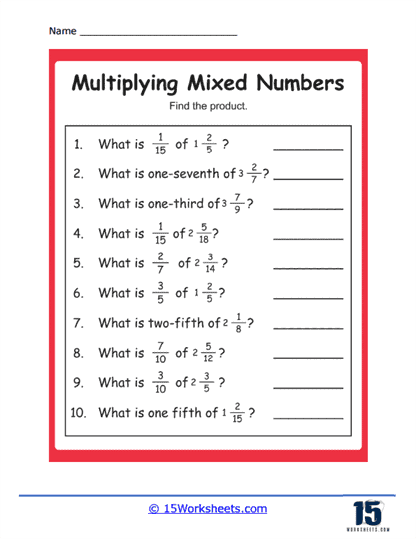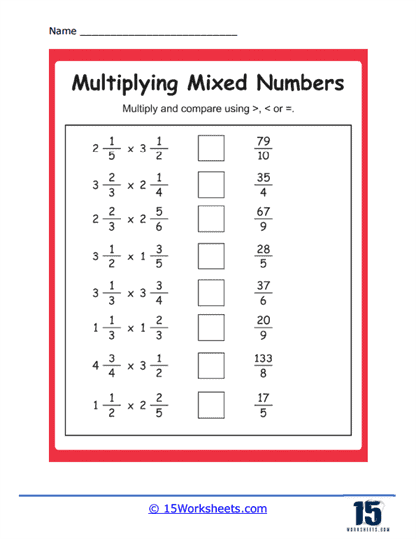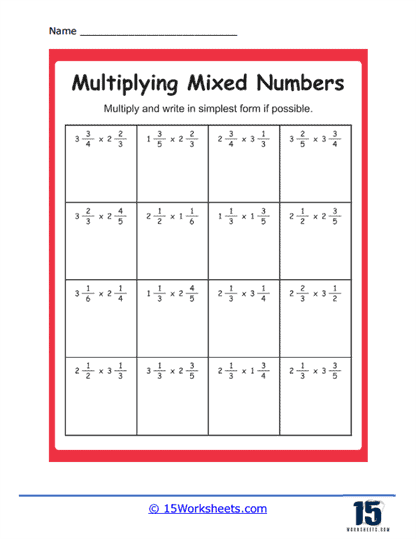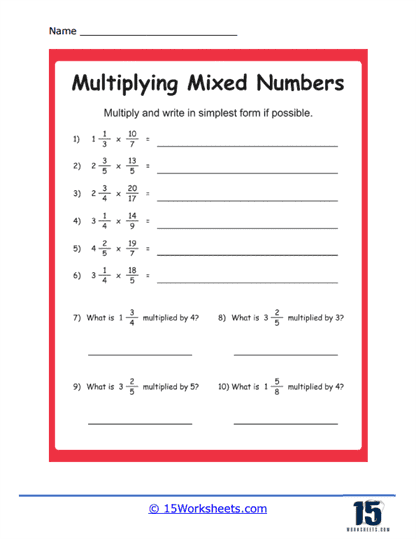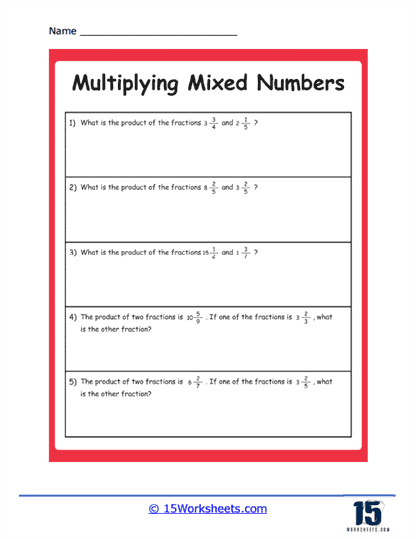Multiplying Mixed Numbers Worksheets
About These 15 Worksheets
These worksheets will help students grasp the concept and procedure of multiplying mixed numbers. As a quick review, a mixed number is a whole number paired with a proper fraction, such as 2 1/2 or 3 3/4.
Types of problems that you might encounter on such worksheets include:
Basic Multiplication Problems – These are straightforward problems where you’re required to multiply two mixed numbers. For example, “Multiply 2 1/2 by 3 1/3”.
Problems involving Conversion – These problems might first require you to convert mixed numbers to improper fractions or vice versa, before or after the multiplication. This can help reinforce your understanding of the relationship between mixed numbers and improper fractions.
Multiple-Step Problems – These problems involve several steps and may require you to use other math skills along with multiplication of mixed numbers.
The ability to multiply mixed numbers is an integral part of mathematics, as it greatly assists in developing your numerical competency and problem-solving skills. It helps you perform complex calculations that involve fractions, making you more proficient in tackling a wide range of mathematical problems. It is the cornerstone for understanding advanced mathematical concepts in algebra, calculus, and beyond.
Let’s explore how the skill of multiplying mixed numbers is useful in everyday life:
Cooking and Baking – Recipes often include measurements in mixed numbers. Suppose you want to double a recipe, or divide it in half. You’ll need to multiply mixed numbers to adjust the recipe.
Shopping – Suppose you’re buying multiple items that cost a mixed number amount (like $3 1/2). You would need to multiply mixed numbers to find the total cost.
Home Projects – If you’re doing a DIY project, like building a wooden shelf, you might need to calculate the amount of material required. If the length of each shelf is a mixed number, and you’re building multiple shelves, you’d need to multiply mixed numbers.
Sports – When keeping score in some sports, or calculating averages, you may need to multiply mixed numbers.
Travel – If you’re planning a road trip, and you know your car uses 1 1/2 gallons of gas per hour, you would need to multiply mixed numbers to figure out how much gas you’d need for a 3 1/2 hour drive.
How Do You Multiply Mixed Numbers?
Multiplying mixed numbers may seem tricky at first, but it can be made easier by following a few key steps:
Convert the Mixed Numbers to Improper Fractions – Remember, an improper fraction is one where the numerator is greater than or equal to the denominator.
Multiply the Fractions – This involves multiplying the numerators to get the numerator of the result and multiplying the denominators to get the denominator of the result.
Simplify the Result – If possible, reduce the resulting fraction to its simplest form. This may involve converting it back to a mixed number, if it results in an improper fraction.
Now, let’s look at two examples to illustrate these steps.
Example 1 – Multiply 2 1/2 by 1 1/3.
Convert to Improper Fractions – 2 1/2 becomes 5/2 and 1 1/3 becomes 4/3.
Multiply the Fractions – (5/2) x (4/3) = 20/6.
Simplify the Result – 20/6 simplifies to 10/3, which is 3 1/3 when converted back to a mixed number.
So, 2 1/2 multiplied by 1 1/3 equals 3 1/3.
Example 2 – Multiply 3 3/4 by 2 2/3.
Convert to Improper Fractions – 3 3/4 becomes 15/4 and 2 2/3 becomes 8/3.
Multiply the Fractions – (15/4) x (8/3) = 120/12.
Simplify the Result – 120/12 simplifies to 10.
So, 3 3/4 multiplied by 2 2/3 equals 10.


